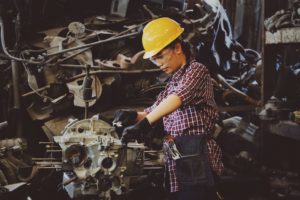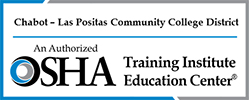 Moving machine parts have the potential to cause severe workplace injuries, including crushed fingers or hands, amputations, burns and blindness. Safeguards are essential for protecting workers from these preventable injuries. Any machine part, function or process with the potential for causing injury must be safeguarded using control methods that prevent employee contact with hazardous areas through effective machine guarding techniques. In addition, a hazardous energy control (lockout/tagout) program needs to complement machine safeguarding methods in order to protect employees during potentially hazardous servicing and maintenance work activities.
Moving machine parts have the potential to cause severe workplace injuries, including crushed fingers or hands, amputations, burns and blindness. Safeguards are essential for protecting workers from these preventable injuries. Any machine part, function or process with the potential for causing injury must be safeguarded using control methods that prevent employee contact with hazardous areas through effective machine guarding techniques. In addition, a hazardous energy control (lockout/tagout) program needs to complement machine safeguarding methods in order to protect employees during potentially hazardous servicing and maintenance work activities.
Employee exposure to unguarded or inadequately guarded machines is prevalent in many workplaces. Amputation is one of the most severe and crippling types of workplace injuries and often results in permanent disability. OSHA has created a Machine Guarding eTool to help employers recognize and control common amputation hazards associated with the operation and use of certain types of machines.
All machines consist of three fundamental areas: the point of operation, the power transmission device and the operating controls. However, their safeguarding needs widely differ due to varying physical characteristics and operator involvement. The Machine Guarding eTool addresses OSHA’s general requirements for machinery, the motions and actions that contribute to different machine hazards and additional considerations that entail overall machine and operator safety.
The OSHA Training Institute Education Center is offering OSHA 2045-Machinery and Machine Guarding Standards online via Zoom on January 19-22, 2021. This 4-day class focuses on various types of common machinery, their related safety standards and the control of hazardous energy sources (lockout/tagout). Register Here
